Flowering ground covers fill in low garden areas as they paint the ground in a layer of color. Drought-tolerant sandpaper verbena (
Glandularia rigida) adds a particularly vibrant splash of deep purple in spring, summer and fall that will have butterflies flocking. Other than requiring good drainage, this South American native isn’t fussy about soil and thrives in full sun — handling temperatures from over 100 degrees all the way down to 0 degrees Fahrenheit. It finds a welcome home in drier climates, where its growth is checked by the availability of water.
Caution: Avoid planting sandpaper verbena in areas with a hot, humid climate, like Florida and the Southeast, where it can become invasive
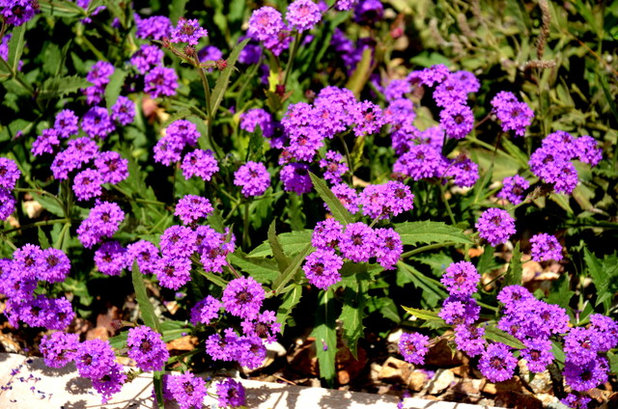
Noelle Johnson Landscape Consulting
Botanical name: Glandularia rigida (syn.
Verbena rigida)
Common names: Sandpaper verbena, rough verbena, tuberous vervain
Origin: Native to Southern Brazil and Argentina
Where it will grow: Hardy to 0 degrees Fahrenheit (USDA zone 7; find your zone)
Water requirement: Drought tolerant once established but does best when watered deeply twice a month in summer and every three weeks in spring and fall; water monthly in winter in the absence of rain; in low-desert gardens, water weekly in summer and every two weeks in spring and fall
Light requirement: Full sun
Mature size: 1 to 2 feet tall and 3 to 4 feet wide
Benefits and tolerances: Drought tolerant; attracts bees and butterflies
Seasonal interest: Flowers in spring, summer and fall
When to plant: In spring or fall from seed or transplants
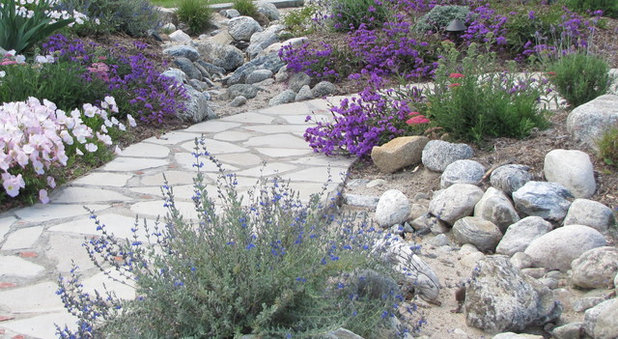
Jean Marsh Design
Distinguishing traits. Clusters of deep purple flowers are held up on stiff stems over dark green foliage. Sandpaper verbena’s leaves are 2 to 4 inches long and have a rough texture much like sandpaper. The foliage is deciduous in winter but grows back rapidly from underground stems (rhizomes) in spring. While this verbena thrives in hot climates, it also handles cold winters down to 0 degrees Fahrenheit. A layer of mulch will help it to handle sub-freezing winter temperatures.
Sandpaper verbena is not recommended for areas with warm, humid climates, such as the Southeastern United States where it has become naturalized. However, it is a popular choice for drought-tolerant landscapes in the arid regions of the Western U.S.
Shown: Sandpaper verbena planted along a dry river bed with Mexican evening primrose (
Oenothera mexicana),
fernleaf lavender (
Lavandula multifida)
and germander sage (
Salvia chamaedryoides).
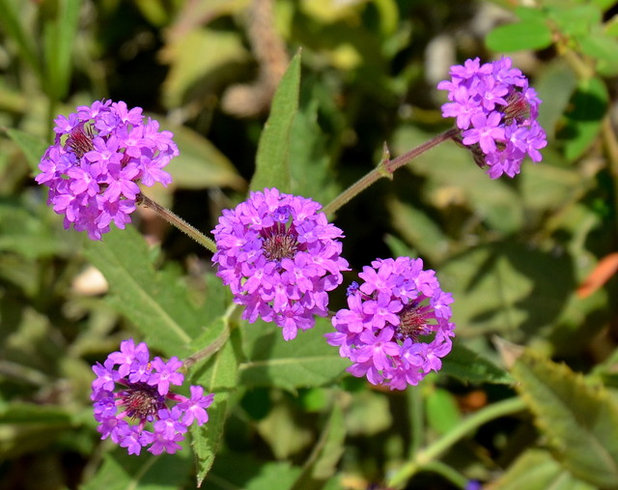
Noelle Johnson Landscape Consulting
The deep purple flowers are one of this verbena’s most attractive elements. Clusters of three to five 1-inch flowers appear spring through fall, held aloft on rigid stems. Both bees and butterflies are attracted to the blossoms.
Prune sandpaper verbena to the ground in early spring, and new growth will soon follow. Severe pruning can also be done once or twice in summer to control its size as well as to increase flowering and stimulate growth of attractive new foliage.
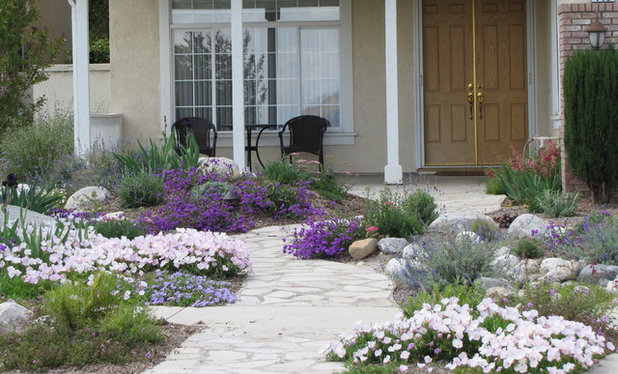
Jean Marsh Design
How to use it. Plant along winding pathways or next to large boulders to appreciate its vibrant color and upright stems to their fullest extent. Sandpaper verbena is also suitable for growing on slopes and will provide a summer carpet of purple flowers. Plant in street medians, where it will thrive despite the limited soil space and hot, reflected sun.
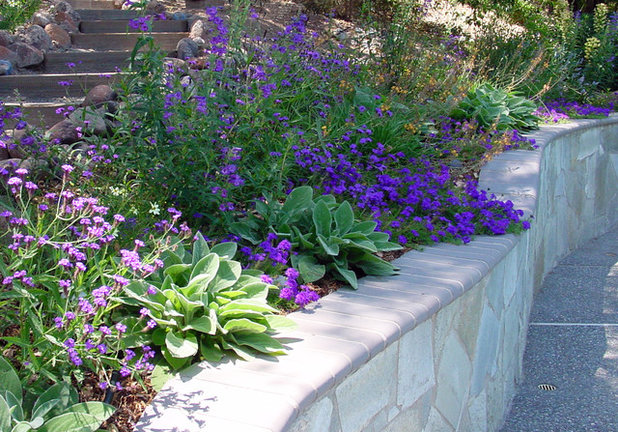
Dig Your Garden Landscape Design
For a cool color palette, pair sandpaper verbena with the lighter colored moss verbena
(
Glandularia pulchella), blackfoot daisy (
Melampodium leucanthum), bush morning glory (
Convolvulus cneorum) or Parry’s penstemon (
Penstemon parryi).
Create an attention-grabbing contrast of textures and color by planting alongside a large boulder and the blue-gray common sotol (
Dasylirion wheeleri).
Opposites attract when it comes to color contrast. Pair sandpaper verbena with angelita daisy (
Tetraneuris acaulis), golden barrel cactus (
Echinocactus grusonii), firecracker penstemon (
Penstemon eatonii) or Mexican honeysuckle (
Justicia spicigera) for striking color contrast.
Plant in front of taller shrubs such as Blue Bells (
Eremophila hygrophana ‘Blue Bells’), Cape honeysuckle (
Tecomaria capensis), little-leaf cordia (
Cordia parvifolia), red bird-of-paradise (
Caesalpinia pulcherrima) or yellow bells (
Tecoma stans), where it will provide understory planting and color contrast with the flowers of the larger shrubs.
Shown: Sandpaper verbena contrasts beautifully alonside lamb’s ear (
Stachys byzantina ‘Big Ears’), purple Tapien verbena
(
Verbena Tapien hybrids)
and orange ‘Hallmark’ bulbine (
Bulbine frutescens ‘Hallmark’).
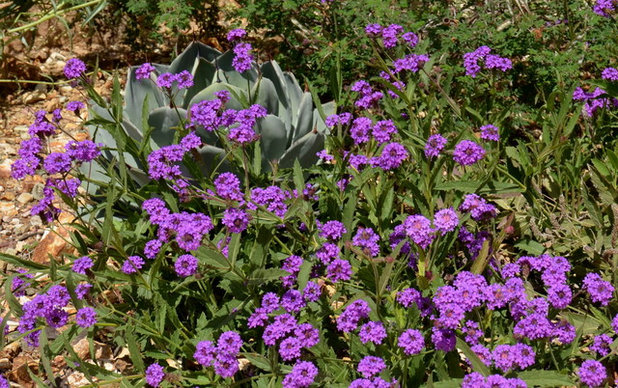
Noelle Johnson Landscape Consulting
Planting notes. This verbena is not fussy. All it requires is full sun and well-drained soil. Like other verbena species, it reseeds itself.
Prune back to the ground as needed in spring and summer to rejuvenate.
Shown: Sandpaper verbena planted next to artichoke agave (
Agave parryi var.
truncata).
Browse plants native to other regions of the U.S.





